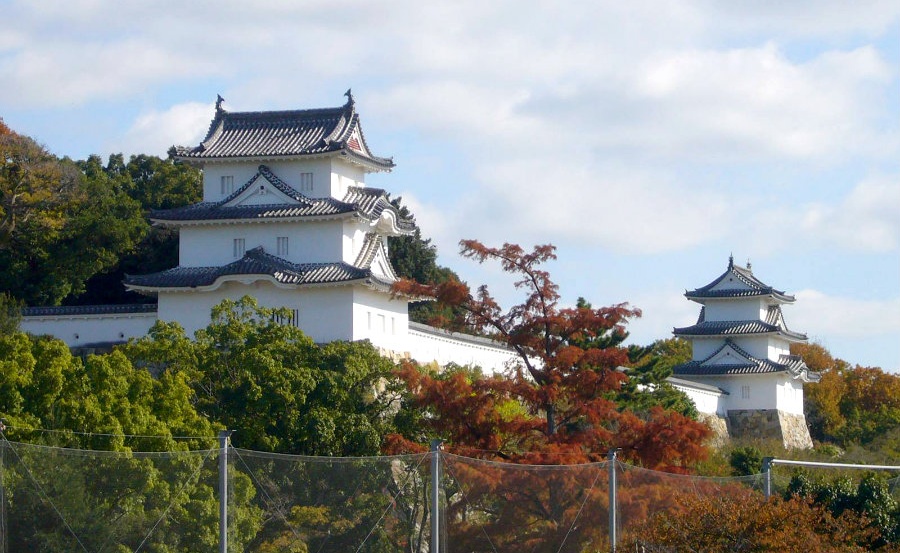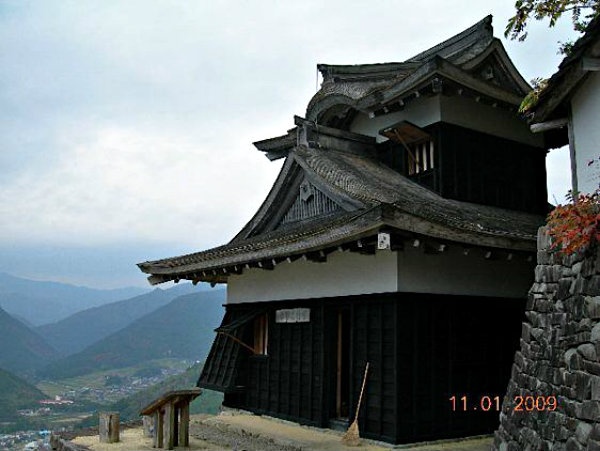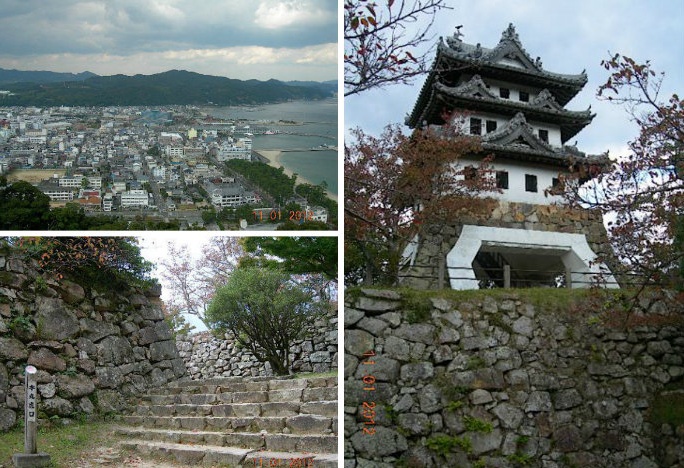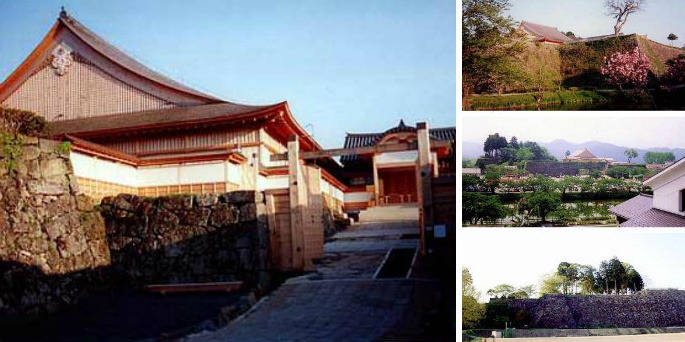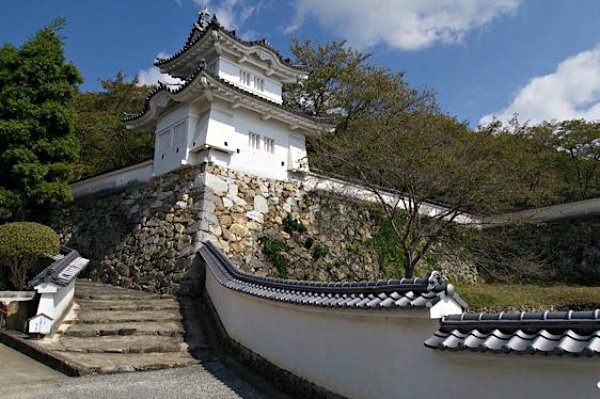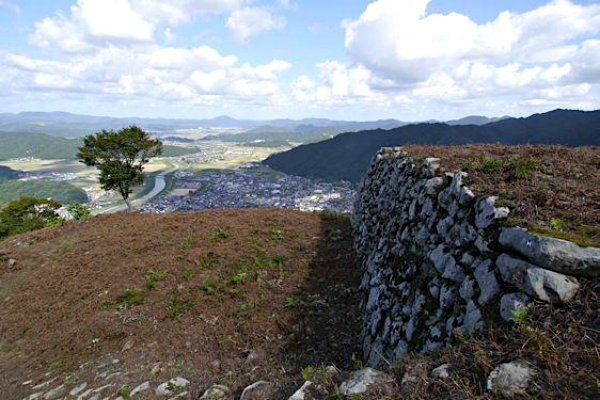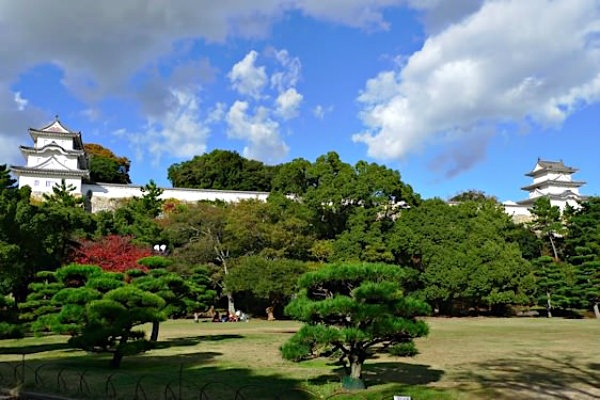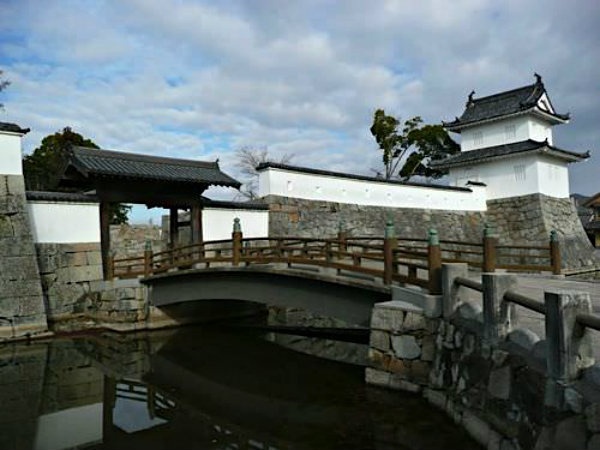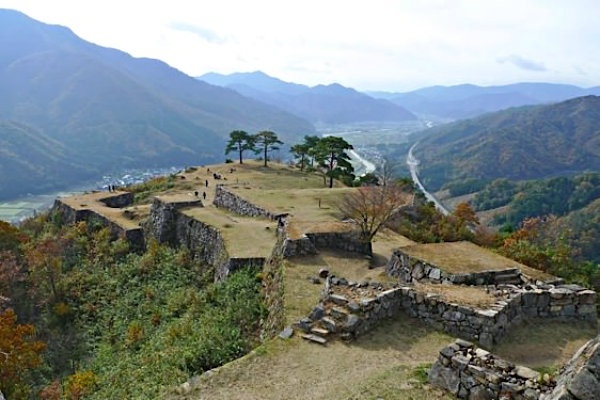9 Castles to Hit in Hyogo after Himeji
Himeji Castle is both Japan's most complete original-construction castle and the most-visited castle in the nation. But what do you do once you've seen the big attraction and still want more castle action? While they get overshadowed by Himeji, there are actually plenty of other castles in Hyogo Prefecture to choose from. Here are nine of the best!
By Jcastle9. Haga Castle (Shiso City, ☆☆)
Haga Shichiro built the original fortification on this site around the year 1261. It was taken over by the Nakamura Clan, who ruled over the area until the end of the Sengoku Period (1467-1590). In 1580, the castle fell to Toyotomi Hideyoshi and was abandoned.
This castle is best reached by private transportation. There's a nice little park and a beautiful view of the valley below. The turret in the pictures is a mock yagura, however.
8. Sumoto Castle (Sumoto City, ☆☆)
A castle was first built at this site on Awaji Island in 1526 by Atagi Haruoki. When the Awaji area was conquered by Toyotomi Hideyoshi, he assigned Sengoku Hidehisa as lord of the castle.
In 1585, Wakisaka Yasuhara was reassigned from Takatori Castle to Sumoto Castle, and he renovated much of the castle during his 24-year reign.
In 1615, Awaji came under the control of the Tokushima domain, and Hachisuka Yoshishige became the new lord. The castle lordship was passed to Inada Shigetane, a retainer of the Hachisuka, in 1631, and the Inada continued to rule until the Meiji Restoration (1868).
These pictures don't do it justice, but Sumoto Castle has many impressive stone walls. It's a bit difficult to get to on public transportation, but would be a worthwhile trip for anyone living in the Kansai area or castle fans with some extra time. The reconstructed "main keep" is really just a simple lookout tower to provide nice views; it should not be considered historically accurate nor representative of any castles.
7. Sasayama Castle (Sasayama City, ☆☆☆)
From the top of Mount Takashiro to the southeast of Sasayama Castle, the Hatano Clan ruled over the Tanba area from Yagami Castle.
But Yagami Castle fell to attacks by Akechi Mitsuhide in 1579, and in 1608, Tokugawa Ieyasu's son Matsudaira Yasushige became lord of Yagami Castle. The following year, Ieyasu initiated the construction of Sasayama Castle while dismantling Yagami Castle as part of his plan to better control Osaka Castle, the Toyotomi, and the other lords of western Japan. The castle was designed by Todo Takatora and completed in only six months. It's famous for having an intact gate type called umadashi.
The structures of this castle were torn down after the Meiji Restoration (1868), with the exception of the Oshoin Palace, which was burned in a fire in 1944. However, the palace was reconstructed from original pictures, and also by making reference to the Ninomaru Palace at Nijo Castle.
Sasayama sits in a basin surrounded by mountains on all sides. When visiting this location it's easy to get caught up in the castle and castle town in such an isolated spot in the mountains. Even though there are almost no structures remaining of the castle today, one can easily imagine what it was like during the Edo Period (1603-1868). There are also a museum and samurai homes to tell the story of samurai in this area.
There are few tourists during the off season, though you can expect more crowds during cherry blossoms season in the spring and during the summer festival period. The area is also famous for a kind of black bean and wild boar meat. These Tanba-area beans are large and sweet, with excellent flavor.
6. Tatsuno Castle (Tatsuno City, ☆☆☆)
Tatsuno Castle is actually made up of the mountaintop castle that sits atop Mount Keirozan and the castle at the base of the mountain. The mountaintop castle was constructed around 500 years ago by Akamatsu Murahide, and was controlled by four generations of the Akamatsu.
In 1577, the Akamatsu turned over this castle to Toyotomi Hideyoshi, who had by then conquered the Chugoku region. At this point, a new castle was constructed at the base of the mountain as a subordinate castle to Himeji Castle.
Until Wakisaka Yasumasa became lord of the castle in 1672, it changed hands several times, leading to the degradation of both the castle and the surrounding castle town. The castle and town were reinvigorated under Wakisaka, and his descendants continued to rule over the region until the Meiji Period (1868-1912).
The famous swordsman Miyamoto Musashi trained at Enkoji Temple and taught his disciples here in Tatsuno. The current Honmaru Palace, gates and yagura (turrets) are wooden reconstructions.
Situated just 15 kilometers (9.3 miles) from Himeji in the southwest of the Harima region (southwestern Hyogo), Tatsuno has thrived since the old days due its location near the Ibo River and convenient transportation. The town itself is rather small, but as you walk its narrow streets among the houses you can see old samurai homes and temples while enjoying the historic atmosphere. It has also been called the "little Kyoto" of Harima.
The extensive remains around the mountaintop are an easy hike, and well worth the time for castle fans. There are many terraced baileys up on the way to the honmaru (central bailey).
The hiking path may be a bit difficult to find. Look for a wooden box on a post with maps inside. It's around the back and to the left of the palace, near the Koraimon gate. Then you need to open and close the small gate next to the box of maps. You can also ask for directions and a map at the museum.
Down the opposite side of the mountain on the way back, you can also see the terraced remains of many samurai homes and gardens.
5. Arikoyama Castle (Izushi Town, ☆☆☆)
Yamana Suketoyo built this castle in 1574 after his Konosumiyama Castle (此隅山城) was defeated by Toyotomi Hideyoshi.
Arikoyama Castle is just 3 kilometers (1.9 miles) southeast of Konosumiyama Castle. Since konosumi-yama sounds like ko-nusumi-yama, which means "mountain of the stolen child," he named his new castle Arikoyama Castle (有子山城)—literally, "mountain where the child is"—as a play on words.
Arikoyama Castle was attacked by Hideyoshi in 1580, when Suketoyo's son Akihiro was lord of the castle. After it fell to Hideyoshi, Maeno Nagayasu and then Koide Yoshimasa became lords of Arikoyama Castle.
After the Battle of Sekigahara (1600), the Koide Clan fortified the foot of the mountain as Izushi Castle and abandoned the mountaintop castle entirely. The Edo Period (1603-1868) saw a more stable government with no local conflicts, so many provinces moved from mountaintop castles to lower castles and put their efforts into building up the surrounding castle towns instead.
4. Izushi Castle (Izushi Town, ☆☆☆)
After the Battle of Sekigahara, Japan's political climate became significantly more stable, with less need for castles as defensive positions. Because of this, Koide Yoshimasa's son Yoshihide decided to fortify the area around the foot of their clan's mountaintop castle, Arikoyama Castle, and built Izushi Castle in 1605. As a result, Arikoyama Castle was abandoned and Izushi Castle became the main castle for the Tajima Domain under the "One Domain, One Castle" law of 1615.
A main keep was never built at Izushi Castle, but it was well fortified with several baileys, moats and yagura (turrets). Four main baileys start at the base of the mountain and go up in steps. The highest bailey, Inari Kuruwa, is thought to have been the location of the lord's palace for Arikoyama Castle.
The castle town was also designed for defense of the castle. The samurai quarters surround the outside of the castle, and several temples were strategically placed near main roads and entrances that could also be used for defense if needed.
The Koide ruled until 1697, when Izushi was transferred to the Matsudaira. In 1706, Matsudaira Tadanori was transferred to Ueda Castle and Sengoku Masaaki, lord of Ueda Castle, was moved to Izushi Castle. The Sengoku Clan continue to rule over Izushi Castle until the Meiji Restoration in 1868.
3. Akashi Castle (Akashi City, ☆☆☆)
Ogasawara Tadazane (former lord of Matsumoto) moved into this area in 1617. In 1619, under orders from Tokugawa Hidetada, he built Akashi Castle in just one year for the purposes of watching over the western lords and building up Tokugawa defenses in the region. He accomplished building this castle in so little time mainly because he used materials from castles in the area that were decommissioned under the one-castle-per-domain law.
The castle deftly makes use of the natural terrain in a three-tiered compound. Ogasawara's father-in-law, Honda Tadamasa—who also directed the construction of Himeji Castle—assisted with the construction of Akashi Castle. Even though they built a foundation for a large main keep, no main keep was ever built. In its place, the honmaru (central bailey) had four large, three-story yagura (turrets), two of which are still standing today.
Eventually, Ogasawara Tadazane was moved to Kokura Castle, and the lordship of Akashi Castle changed hands several times until it was taken over by Matsudaira Naoakira in 1682. The Matsudaira continued to ruled until the coming of the Meiji Restoration (1868).
While you mostly only see pictures of the two main yagura for this castle, many stone walls and well-defined baileys still exist as well.
2. Ako Castle (Ako City, Hyogo, ☆☆☆☆)
Ukita Hideie built a branch or subordinate castle of Okayama Castle here in 1573. When Asano Naganao came in 1648, he was instructed by the Tokugawa government to build a new castle.
If you look at a map of the castle, you'll see that the outline looks very unique. It employs a lot of corners and arrowhead-type structures. This was a very modern idea to improve firing range near the castle and increase its defensive ability. You also see such structures very clearly at Goryokaku in Hakodate.
There's a main keep foundation at Ako Castle but the main keep wasn't built because the Tokugawa government never granted permission to do so. Ako Castle was dismantled in 1873 under the Castle Abolishment Law.
1. Takeda Castle (Asago City, Hyogo, ☆☆☆☆)
Takeda Castle was built on this site in the path of aggression between the Harima (southwestern Hyogo), Tanba (eastern Hyogo and central Kyoto Prefecture) and Tajima (northern Hyogo) regions as a stronghold of Izushi Castle. It was built by Otagaki Mitsukage, a retainer of Yamana Sozen, lord of the area, in 1441. Otagaki, whose family had been military commanders of the Yamana clan for five generations, became lord of the castle.
Takeda Castle was conquered by Toyotomi Hideyoshi in his Tajima campaign of 1577. Hideyoshi placed it in the control of his younger brother, Hidenaga, who moved to Izushi less than two years later. Akamatsu Hirohide, the last lord of the castle, fought on the side of the Western Forces for Tokugawa Ieyasu at the Battle of Sekigahara (1600). Hirohide served valiantly in the battle, but was accused of arson. Later that year he committed seppuku and Takeda Castle was abandoned.
This is a truly impressive castle. Despite being only ruins, the location, stone walls, design and view easily make it worth four stars. It's amazing how they built such extensive stone walls on top of the mountain, and you won't find fences or shrubs along the steep drop-offs along the edges of the stone walls like you might see at other castles.
There are few trains running to Takeda, and you'll want at least 90 minutes at the castle (depending on how much you take pictures), so plan accordingly. There is a bit of historic atmosphere of the old castle town and temples near the station as well, and there are also nice views looking down on the castle from a nearby mountain.


